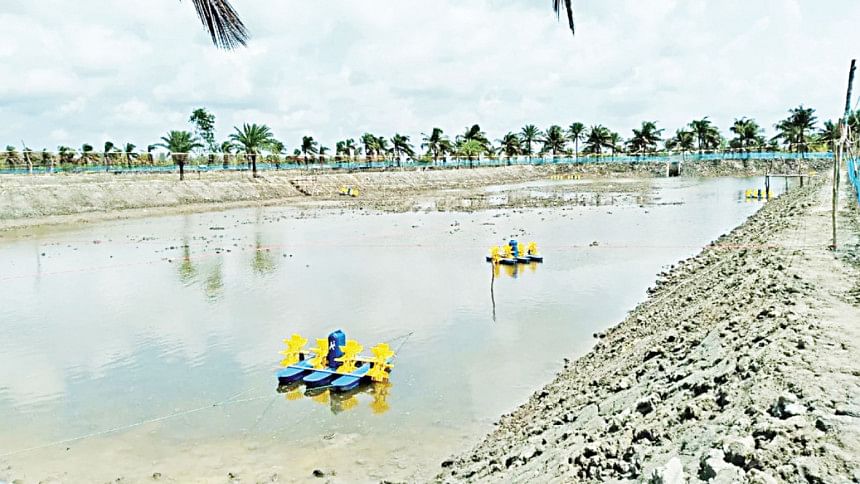Trial farming of vannamei shrimp to begin in Chattogram

After a long wait, the experimental farming of vannamei is set to begin in the Chattogram region that could pave the way for the commercial production of a shrimp variety that rules the roost in the global market.
The Department of Fisheries has allowed four hatcheries in the region to cultivate vannamei, also known as white-leg shrimp, on a trial basis and directed them to complete the piloting within a year.
The companies are MK Hatchery in Ukhia of Cox's Bazar, Dafa Feed and Agro Products Ltd under Karnaphuli in Chattogram, Niribili Hatchery in the Kalatali area of Cox's Bazar, and Midway Scientific Fisheries Ltd in Khurushkul of Cox's Bazar.
In order to test whether white-leg shrimp can cope with the local environment, the Fisheries Department gave permission to 11 companies in the country to farm vannamei on a trial basis for a year in April. Of them, four are from the Chattogram region.
Agreements for the experimental vannamei farming could be signed this month, according to officials of the department.

The move comes following pleas from exporters as locally grown black tiger shrimp, or bagda, and freshwater prawn, or golda, are unable to compete with cheaper varieties in western markets. And the approval is the result of successful piloting in Khulna in 2021.
Lutfar Rahman, owner of Niribili Hatchery, says bagda shrimp farming has become risky.
"So, the government should have allowed the production of more productive vannamei eight to nine years ago. We are now far behind the neighbouring countries, which are benefiting financially by cultivating vannamei commercially."
"We can't compete globally by exporting only lobsters and bagda. If the government allows vannamei farming commercially, the shrimp export industry will revive."
Hatchery owners say the cost of production of bagda and golda is higher than vannamei. As a result, they have to ship local varieties at the prices of vannamei, in order to retain the buyers, thus incurring losses.
The productivity of vannamei is high. For example, a maximum 1.5 tonnes of bagda shrimps can be cultivated in one acre area whereas at least five tonnes of vannamei can be produced in the same area, they said.
Currently, vannamei shrimp is being farmed commercially in 62 countries, including 15 in Asia.
Vannamei accounts for 77 per cent of the world's shrimp trade and its demand is growing globally as its price is lower than that of other varieties.
According to the Food and Agriculture Organisation and the Global Aquaculture Alliance, in 2016, the world produced 35.5 million tonnes of vannamei, 5.5 million tonnes of bagda, 2.4 million tonnes of lobster, and 3 lakh tonnes of other varieties.
Vannamei production in the Asian countries such as China, India, Vietnam, Thailand, Indonesia and Malaysia was 23.91 million tonnes in 2016 and it rose to 31.12 million tonnes in 2019.
In India, many states have switched from tiger shrimp to vannamei over the years due to high productivity and profit margin, according to The Hindu newspaper.
As Bangladesh has not yet started commercial vannamei farming, its contribution to the global market of the variety is nil.
In fact, Bangladesh has lagged in shrimp exports in the world market of $32 billion for the last few years.
Export earnings from local varieties had fallen consistently since the fiscal year of 2014-15, because of the higher prices of the local varieties than vannamei, before its revival in recent months.
The shipment of shrimps rose 34.63 per cent year-on-year to $352.24 million in the first 10 months of the current fiscal year, data from the Export Promotion Bureau showed.
It was $328.84 million in the last fiscal year, $333 million in 2019-20 and $550 million in 2013-14.
Of 105 shrimp processing companies in the country, 30 to 35 are export-oriented.

 For all latest news, follow The Daily Star's Google News channel.
For all latest news, follow The Daily Star's Google News channel. 








Comments